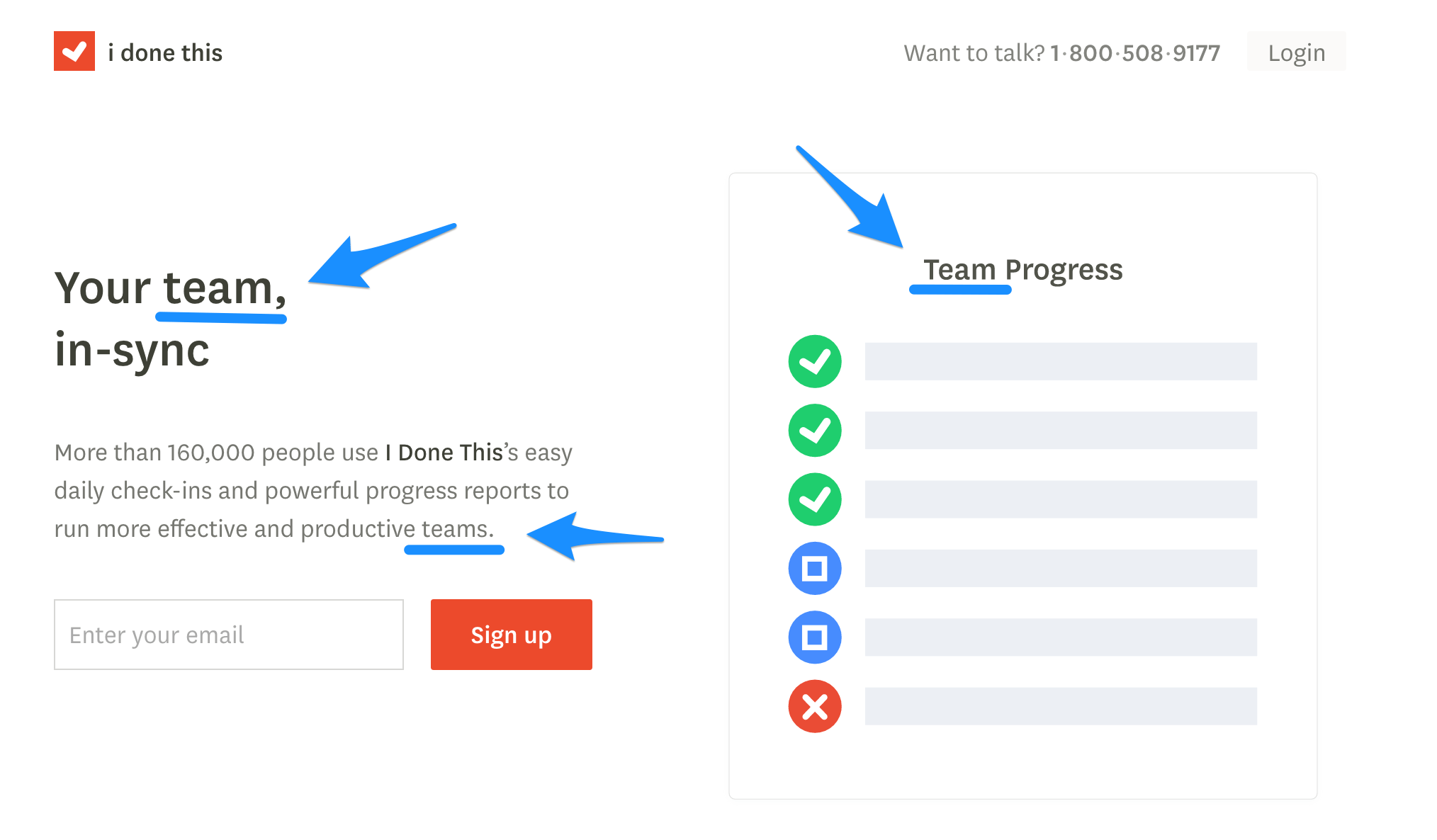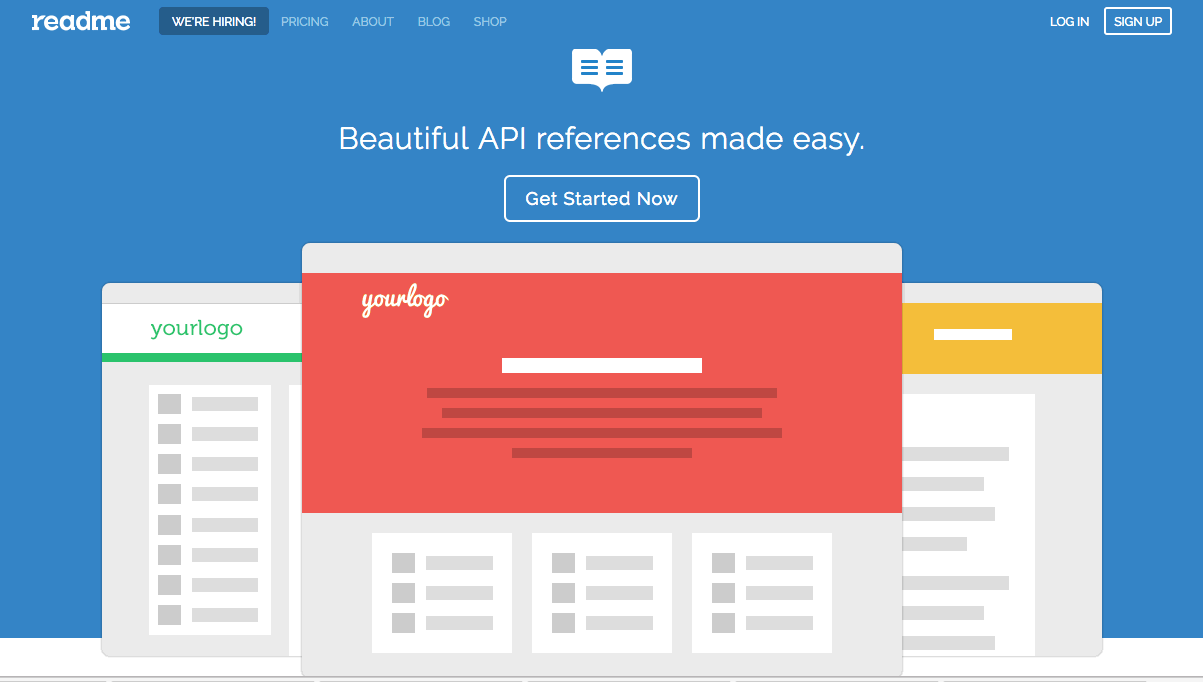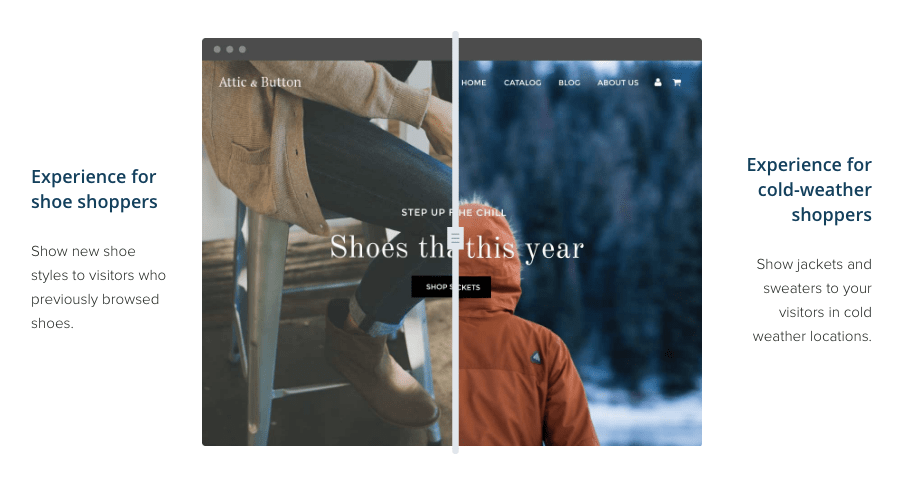
Most people think David Ogilvy became one of the most successful ad men of all time because of his artistic, creative talent. But in reality, he was successful because he treated copywriting like a science.

Before he became the “Original Mad Man,” Ogilvy was a researcher. He worked with George Gallup (founder of the Gallup Poll) to study human behavior, and some of his insights on nationalism were even used by Eisenhower to direct war strategy.
In studying human behavior, Ogilvy learned about how we think—and how we can be persuaded. His research background is what made him so good at creating ad copy, and his techniques can make you great, too. You don’t even need to run an ad campaign to learn from him—we’ll teach you how to apply his research-driven techniques to your website copy.
The “Original Mad Man’s” Method for Customer-Driven Copy
Advertising people who ignore research are as dangerous as generals who ignore decodes of enemy signals. –David Ogilvy
The stakes for making compelling website copy on the first try are high. You’ve spent tons of time and money marketing your site. If potential customers leave when they don’t connect with your copy, all those resources were wasted.
You wouldn’t ignore customer insights (analytics, feedback, etc.) when making important product decisions—and you can’t ignore them in your marketing. Without a customer-driven strategy, your work is directionless.
But your website copy doesn’t need to be guesswork. According to the Father of Advertising, researching these elements will turn copywriting into a science—where you can succeed over and over again. The three elements of his method are:
- Who you’re writing for.
- How that person thinks.
- What that person needs.
Let’s walk through each element of the process.
The Who: Decide Your Target Audience to Maximize Conversions
Don’t count the people that you reach. Reach the people who count. – David Ogilvy
Deciding who your target audience is should be the driving force behind your copy. You can use research to figure out both who you’re already writing for, and who you want to be writing for.
Luckily, you don’t have to do it alone. These are some of our favorite tools for gathering insights into who is visiting your site.
- FullStory identifies your visitors and lets you play back their sessions on your website like a DVR.
- Clearbit can give you demographic information from just an email address and turn anonymous website traffic into sales leads.
- Qualaroo provides on-site surveys that can collect email addresses and information of your choice.
Tools like these can help you figure out who’s visiting your site and what they’re doing there—but it’s up to you to take action on those insights. Here’s how productivity tool I Done This did.
How I Done This Changed Their Website Copy from Target Audience Insights
I Done This used Qualaroo to discover who on their site was converting to their free trial—and used the results to change their website copy. Most of their conversions came from people who wanted to use the tool for individual productivity, even though they wanted to target the (more profitable) team productivity customers.
When I Done This realized the discrepancy between who they wanted to speak to and who they were speaking to, they changed their copywriting strategy. They were trying to speak to teams, and yet the word “team” wasn’t clearly featured on their site. Here’s what their sign-up page looks like now:

[source]
In this sign-up page, they put the word “team” in the header, the graphic, and in the smaller body of text. With three mentions of the word “team,” two of which are in bold, it’s much clearer who I Done This is speaking to—and it showed in their conversions.
Make your target audience the driving force behind your copy. You know why they should use your product, and now they know, too.
The How: Persuade Your Customers By Walking in Their Shoes
The consumer isn’t a moron. She’s your wife. You insult her intelligence if you assume that a mere slogan and some vapid adjectives will persuade her to buy anything. – David Ogilvy
Once you figure out who your customer is, you need to research how they think. To do that, you have to walk in their shoes. Like Ogilvy points out, you insult their intelligence if you think they’ll be persuaded by merely a catchy slogan.
“Marketing copy” is your enemy. If your copywriting sounds like copywriting—instead of how your customers speak and think—you need to re-write it.
We spoke to Len Markidan, Head of Marketing at Groove, about how unnatural copy doesn’t connect with your customers.“I’ve never heard a software engineer turn to their colleague and say that they wanted an analytics tool that was more ‘robust’ and ‘flexible,’” Markidan explained. “But people still use that kind of copy on their sites.”
How ReadMe Speaks Their Customers’ Language
ReadMe, an app that makes API documentation easy, made sure their marketing copy spoke to developers. They used surveys and customer success calls to check in on what their customers wanted—and in the process, learned more than a little about how they think.
They’ve applied what they’ve learned to their website, too. Check out their homepage copy. It says, “Beautiful ________ made easy,” and what’s inside that blank changes from “developer hubs” to “API references” to “documentation” to “dev communities” every few seconds.

This kind of language—the language of developers—speaks right to ReadMe’s target audience. Only developers call themselves “dev communities,” and only developers really need “API references.” The website copy is written in the language that developers think.
In order to write for your audience, you have to think like them.
The What: Earn Brand Trust by Presenting a Solution, Not a Product
Good copy can’t be written with tongue in cheek, written just for a living. You’ve got to believe in the product. – David Ogilvy
After you’ve figured out who your target audience is and how they think, you need to consider what problem your product solves in their lives. Like Ogilvy says, you can’t just write your website copy to sell your product. You’ve got to believe in what it does for your customers.
Your product isn’t a product—it’s a solution. Digital marketing agency House of Kaizen explains that your website needs to show customers how your product increases their gains, decreases their pains, or both—otherwise they won’t be persuaded to buy.
Think of it like a mattress. You could sell a mattress by saying that the right one will give you a better night’s sleep and make your workday more productive (increases gains). You could also sell one by saying that the right one will get rid of your chronic back pain (decreases their pains).
Both statements are true—when you have a good product, you help your customers. But it’s your job to make sure customers know how you can help in your website copy.
How Qualaroo and Optimizely Solve Customers’ Problems with Personalization
For any product or service, there are different types of people who could be looking at your site—and different ways to solve their problems. To optimize problem-solving for every user, Qualaroo and Optimizely came together to make website experiences as personalized as possible.
Using a Qualaroo survey, you can find out information about a visitor—where they live, for example. Then, using Optimizely’s integration with Qualaroo, you can take them to a personalized landing page based on that information. So if your visitor is in Southern California, you can take them to a page that offers summer clothes, and if they’re in Toronto, you take them to a page that offers winter ones.

[source]
Using Qualaroo’s branching logic, you can create in-depth user personas. You can use those in-depth user personas to help solve your customers’ in-depth, personalized problems.
Write Strong Copy Without Artistic Genius
Don’t bunt. Aim it out of the ballpark. Aim for the company of immortals. – David Ogilvy
“Aiming it out of the ballpark,” like Ogilvy says you should, doesn’t require a stroke of artistic genius. You don’t need luck—you need research. Learning who your customers are, how they think, and what they need should influence every website copy decision you make.
Using Ogilvy’s three-step process to customer insights gives you a repeatable process for writing copy. When you treat copywriting as a science, rather than an art, you can hit a home run every time.
FREE. All Features. FOREVER!
Try our Forever FREE account with all premium features!




